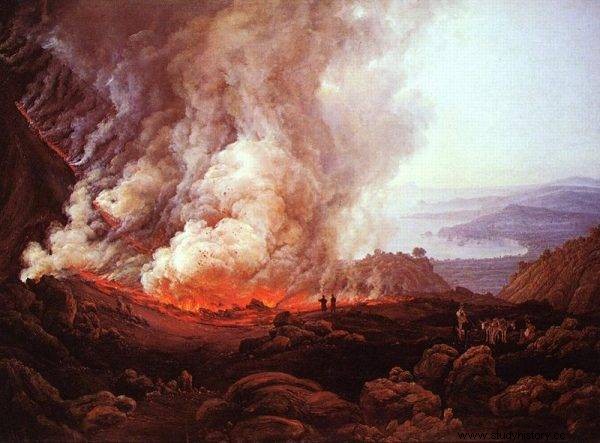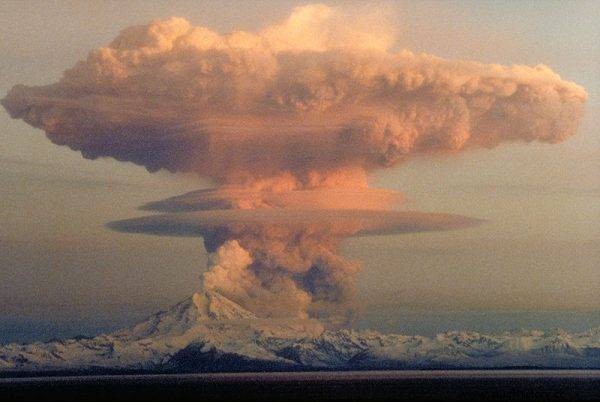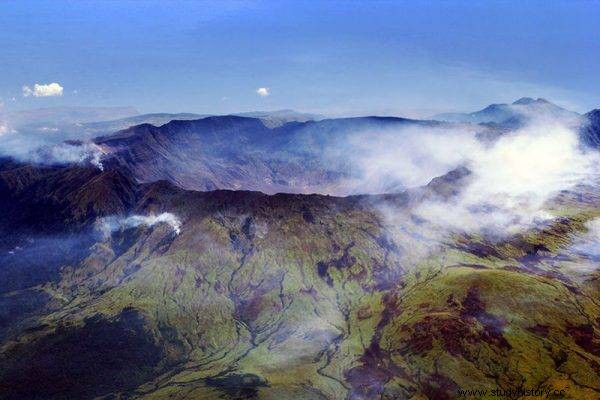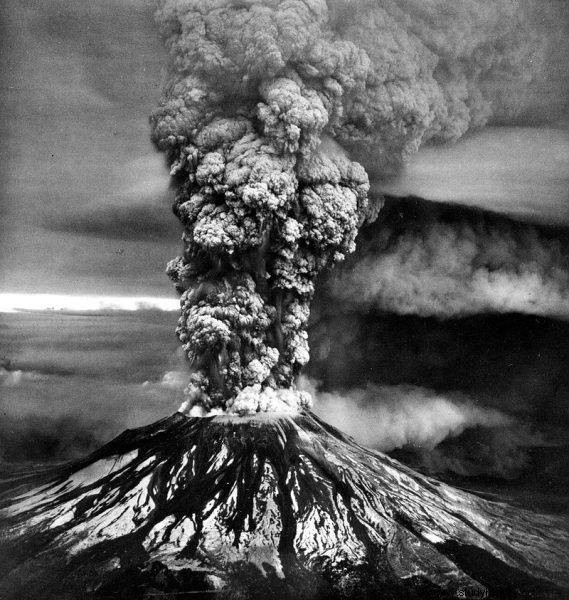Everyone has heard of Pompeii destroyed by Vesuvius. However, volcanoes have many more victims on their conscience. These are the biggest eruptions in history.
Scientists estimate that in the last 10,000 years, more than 1,500 volcanoes have been active on Earth , causing a total of nearly 8,000 eruptions . Today it is believed that there are around 800 active volcanoes, more than half of which are located in the land area (mainly in Italy and Iceland in Europe).
From the human point of view, the safest volcanoes are extinct volcanoes, the activity of which has not been observed in historical times. Interestingly, such volcanic cones are found, for example, in Poland. In addition, researchers distinguish active volcanoes, which make themselves known on a regular basis, and napping volcanoes, the activity of which is potentially possible, but has not taken place for a very long time.
However, by volcano activity we do not always mean its spectacular eruption and the ejection of streams of boiling lava. Sometimes it manifests itself with earthquakes, changes in the crater (e.g. the appearance of magma in it) or the ejection of gases or volcanic ash.
Prehistoric Super Volcanoes
It is believed that the largest and most tragic eruptions occurred thousands or even millions of years ago . We only know about them from geological research. The effects of supervolcanoes were often felt within thousands of kilometers, and sulfuric acids released into the atmosphere caused climate change.

The largest and most tragic eruptions are believed to have occurred thousands or even millions of years ago.
Volcanic eruptions are assessed on an eight-point scale (VEI) - it determines the amount of material produced during the eruption, as well as the height to which it was ejected. Each subsequent step is ten times stronger eruption. Only supervolcano eruptions received 7th and 8th degrees.
75,000 years ago, a certain supervolcano from Sumatra nearly destroyed humanity . Thanks to numerous studies conducted, among others, on the bottom of the South China Sea, we know today that the ash after the Toby eruption covered the entire south of Asia with a layer of several centimeters.
The sun's rays stopped reaching the Earth and there was a global cooling that was felt for up to 1000 years . Populations of many species, possibly including Homo sapiens have been decimated. It took centuries for them to revive.
Read also:The biggest killer in history. Hundreds of millions of people have fallen victim to it
Biggest explosion ever
In the vicinity of Naples, partly under water and partly on land, is Campi Flegrei, over 13 kilometers in diameter. These so-called Fields of Phlegre are the caldera of a supervolcano (a depression in the top of the volcano caused by its explosion).
Its eruption took place about 40,000 years ago. To this day, gases often escape from between the protruding volcanic cones and 24 craters.

Mount Redoubt volcano eruption
Scientists agree that the eruption of this supervolcano was one of the largest in the history of the world. The eruption blasted 200 cubic kilometers of magma and gases into the air. They created clouds that hung over Europe for several years.
Limited amount of sunlight caused enormous climatic changes and another glaciation in the Northern Hemisphere . As a result, the southward shift of the glacier likely led to the extinction of the Neanderthals.
Read also:Which was the worst year in the history of Europe? Scientists have just established this. The result of their research may surprise you!
Eruptions in historical times
One of the first strong eruptions we have a historical view of was the eruption of the Santorini volcano on the Greek island of Thira around 1600 BC. It was strong enough to wipe out the Minoan civilization.
The explosion, the strength of which is comparable to the explosion of 4 atomic bombs, was accompanied by a huge tsunami . The cloud of ashes rose to a height of almost 30 km, and the roar was heard at a distance of up to a thousand kilometers. The island literally fell into pieces (one of them is the famous Santorini), and it was re-inhabited only after several hundred years.
The most famous eruption of those times was the eruption of Mount Vesuvius in the fall of 79. The volcano sank three unexpected destruction of the city in the sea of lava:Pompeii, Herculaneum and Stabiae. But this is not the only such disaster. Hundreds of years later, the volcano Ilopango destroyed the Mayan cities and numerous trade routes.
In medieval chronicles, you can read about the exceptionally cold summer of 1258. The reason for the cooling was the eruption of the Indonesian volcano Rinjani, which erupted (rated 7 on the VEI scale) a year earlier.
Read also:Hungry ages. What was eaten in the Middle Ages and how often did people starve?
Year Without Summer
Likewise, events happened six centuries later. It is not without reason that the year 1816 was called by historians "a year without a summer". The source of cooling was another Indonesian volcano - Tambora.
Its eruption was so spectacular that it was heard for several hundred kilometers, and the volcanic ash fell as much as 1,300 kilometers away. The Tambora eruption also caused massive tsunamis and earthquakes. It is estimated that it cost the lives of over 120,000 people.

Aerial view of the Tambora volcano massif and caldera
Decades later, in the summer of 1883, probably the loudest eruption in historic times . Krakatau volcano, located on the uninhabited island of the same name, erupted on August 26 at 12:53 pm .
Nobody expected such an eruption. The roar, often referred to as the loudest sound in history, reached up to 350 decibels. The explosion was heard over 4,000 kilometers from the island.
Ejected volcanic ash and gases during the Kakatau eruption floated in the atmosphere for several years, causing unusual phenomena. The sun in various parts of the world had unusual colors and glows, and the light reflected by the moon was green or blue.
Read also:Meat rain, a year without summer, Egyptian darkness - heralds of the apocalypse that (fortunately) did not come true
Volcanic century
Fortunately, modern eruptions are not so catastrophic. In 1902, 5,000 people were killed by the eruption of the Santa Maria volcano in Guatemala - far less than the subsequent malaria epidemic in the area.
Ten years later, 100 kilometers from the erupting volcano Novarupta in Alaska, the village of Kodiak was covered with a layer of ash that remained hot for the next 4 years.

In 1980, Mount St. Helens.
In 1980, Mount St. Helens. The eruptions were accompanied by avalanches and earthquakes that killed 60 people. Interestingly, apart from the lava, the volcano also spewed… ice and snow.
The eruption of the Philippine volcano Piantuba in 1991 led to a global reduction of temperature by 0.5 degrees for several years, and the last major eruption in Iceland in 2010 caused air paralysis throughout Europe.
There is nothing strange or scary in the fact that active volcanoes wake up from time to time, spewing lava and gases. Worse, if one of the dormant supervolcanoes is "awakened" from the "sleep" ... It remains to be hoped that it will not happen for the next thousands of years.
